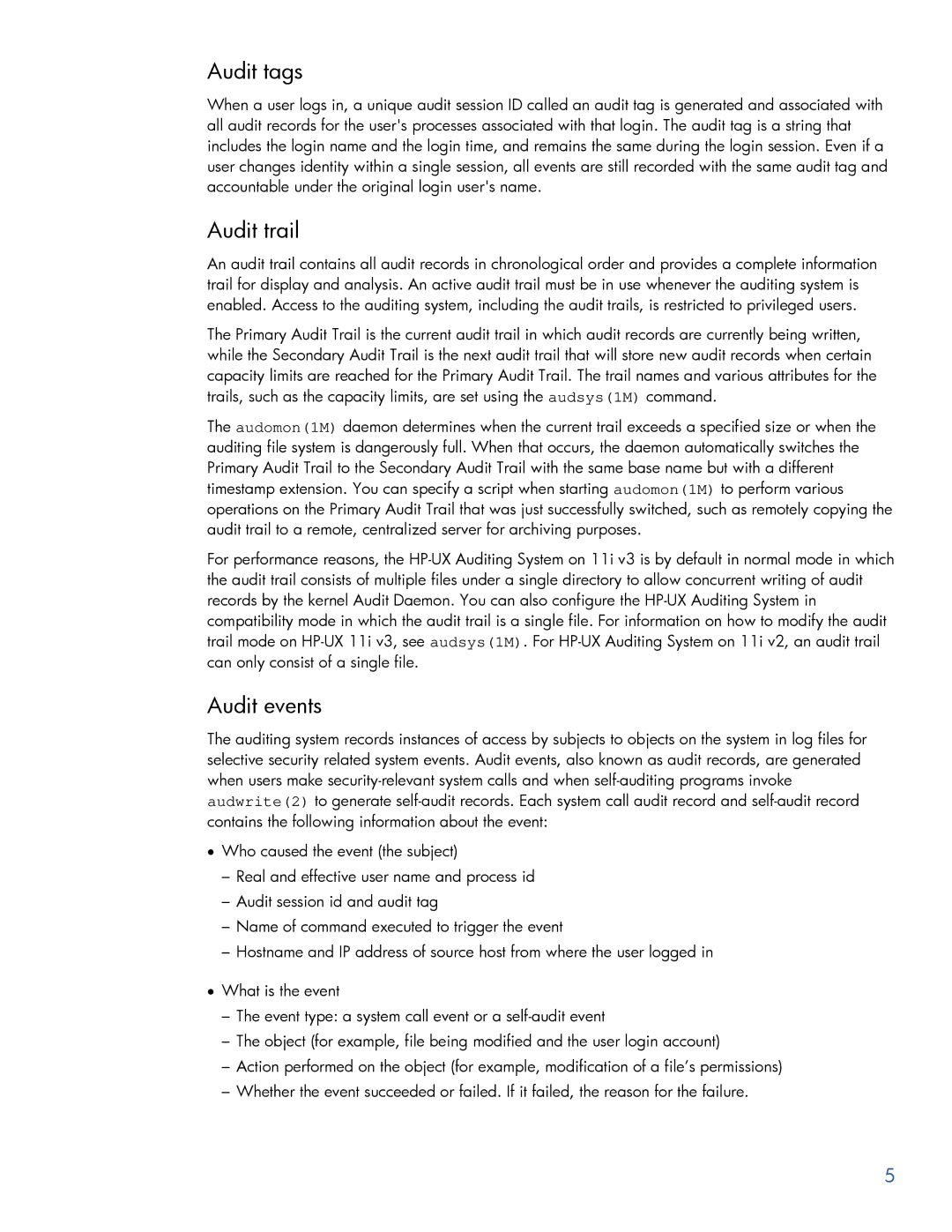Audit tags
When a user logs in, a unique audit session ID called an audit tag is generated and associated with all audit records for the user's processes associated with that login. The audit tag is a string that includes the login name and the login time, and remains the same during the login session. Even if a user changes identity within a single session, all events are still recorded with the same audit tag and accountable under the original login user's name.
Audit trail
An audit trail contains all audit records in chronological order and provides a complete information trail for display and analysis. An active audit trail must be in use whenever the auditing system is enabled. Access to the auditing system, including the audit trails, is restricted to privileged users.
The Primary Audit Trail is the current audit trail in which audit records are currently being written, while the Secondary Audit Trail is the next audit trail that will store new audit records when certain capacity limits are reached for the Primary Audit Trail. The trail names and various attributes for the trails, such as the capacity limits, are set using the audsys(1M) command.
The audomon(1M) daemon determines when the current trail exceeds a specified size or when the auditing file system is dangerously full. When that occurs, the daemon automatically switches the Primary Audit Trail to the Secondary Audit Trail with the same base name but with a different timestamp extension. You can specify a script when starting audomon(1M) to perform various operations on the Primary Audit Trail that was just successfully switched, such as remotely copying the audit trail to a remote, centralized server for archiving purposes.
For performance reasons, the
Audit events
The auditing system records instances of access by subjects to objects on the system in log files for selective security related system events. Audit events, also known as audit records, are generated when users make
•Who caused the event (the subject)
–Real and effective user name and process id
–Audit session id and audit tag
–Name of command executed to trigger the event
–Hostname and IP address of source host from where the user logged in
•What is the event
–The event type: a system call event or a
–The object (for example, file being modified and the user login account)
–Action performed on the object (for example, modification of a file’s permissions)
–Whether the event succeeded or failed. If it failed, the reason for the failure.
5
